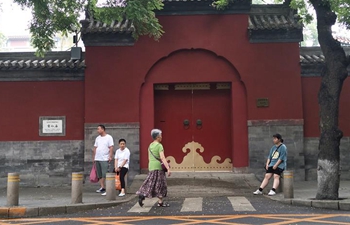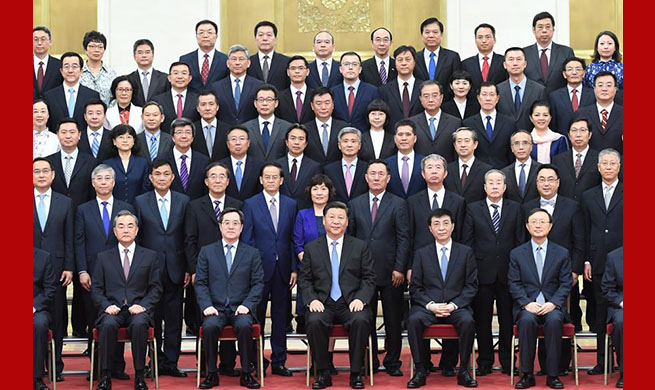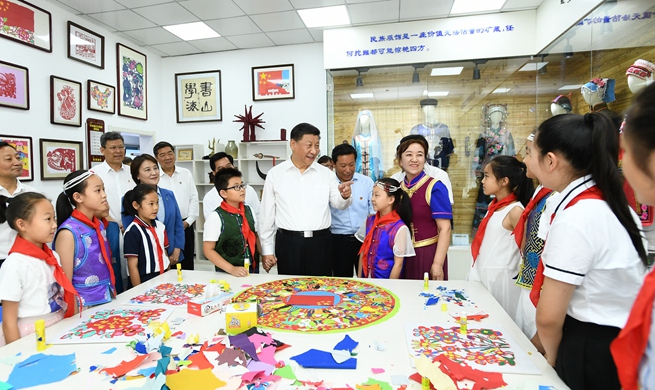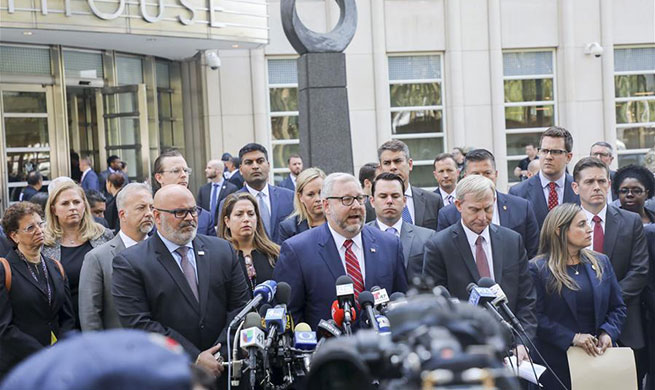BEIJING, July 17 (Xinhua) -- Although external uncertainties abound and domestic downward pressure has grown, China's policymakers have many economic levers at hand to combat the challenges.
While saying economic achievements in the first half (H1) of the year are hard-won, Premier Li Keqiang has called for tapping into countercyclical measures and carrying out pre-emptive and fine-tuning when necessary.
Analysts said if the economic environment exacerbates, the government would beef up monetary, fiscal and other policy support on top of existing incentives.
The government unveiled many pro-growth policies, including the 2-trillion-yuan (about 290.7 billion U.S. dollars) tax and fee cuts, special local government bond issuance and targeted financial supports.
The headline figure showed the economy expanded 6.2 percent in the second quarter of 2019, down from 6.4 percent in the first quarter but still within the government's annual targeted range of 6-6.5 percent.
Despite the moderating GDP growth, activities rebounded visibly in June, with almost all the growth indicators beating expectations, a sign that effects of the government's policies are filtering through, which will be more evident in the second half, said Mao Shengyong, spokesman of the National Bureau of Statistics.
UBS economist Wang Tao expected the People's Bank of China (PBOC), the country's central bank, to further ease liquidity to ensure continued credit rebound in H2 and cut the reserve requirement ratio (RRR) by 100 basis points without adjusting the benchmark rates.
Cheng Shi, the chief economist with ICBC International Holdings Ltd., echoed Wang's view and said following the possible rate cut of the Fed, the PBOC is likely to lower the interest rates of open market operations or the medium-term lending facility.
The PBOC adopted targeted RRR reduction twice this year to support private as well as micro and small enterprises. The latest RRR cut, announced in May and being conducted in three phases, unleashed a total of 280 billion yuan of liquidity into the market.
The government is expected to continue the proactive fiscal policy, with more support for weak links such as public services and infrastructure.
Meng Wei, a spokeswoman of the National Development and Reform Commission, said the government would push forward the construction of major projects and boost investment in the private sector.
The growth of infrastructure investment is expected to rebound to "mid-high single digits" in H2 from 4.1 percent in H1, said Wang Tao, the UBS economist.
The government could also ease the criteria for the issuance of special local government bonds, and allow them to fund local infrastructure projects along with major national projects, said Lian Ping, chief economist with the Bank of Communications.
Lian said the government could consider raising the quota of the special local government bonds after this year's 2.15-trillion-yuan quota runs out by the end of September.
Besides policies to avoid short-term economic fluctuations, the country has put into place policy incentives to enhance long-term strength for development.
The country vowed to stick to high-quality development, continue improving its business environment, and further open up its markets for global businesses.
















